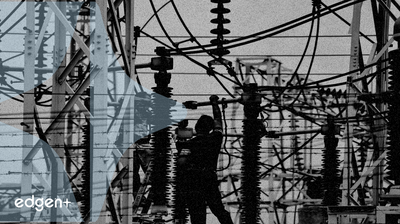Xerox Holdings Corp (XRX) Price
XRX Stock Price Chart
XRX Price
Xerox Holdings Corp
$2.99
-1.32%
$-0.03
$3.01
0.83%
$0.02
Features
Trading Strategies
Resources
Ask AI About XRX

No Data Yet

## Market Overview: Hardware and Infrastructure Sector Experiences Diverse Q2 Performance The **Hardware & Infrastructure sector** concluded the second quarter with a highly varied earnings landscape, exhibiting significant divergence in corporate performance and subsequent stock market reactions. While several entities reported robust growth driven by strategic positioning in emerging technologies, others faced challenges, leading to notable investor re-evaluations. This diverse outcome has fostered an environment of **high volatility** and **uncertainty** within the sector, as investors recalibrate their capital allocation strategies. ## Key Earnings Highlights and Disappointments The quarter saw a clear bifurcation between companies demonstrating strong growth trajectories and those grappling with operational or financial headwinds. **Pure Storage (NYSE:PSTG)**, a pioneer in enterprise all-flash storage technology, delivered a strong performance. The company reported revenues of **$861 million**, marking a **12.7% year-on-year increase** and outperforming analysts' expectations by 1.7%. This positive financial update, coupled with an impressive beat on billings and EPS estimates, was well-received by the market, with **Pure Storage stock advancing 45%** since its earnings report. The stock currently trades at $88.25. Similarly, **IonQ (NYSE:IONQ)**, a quantum computing leader, significantly surpassed expectations. IonQ's revenues surged to **$20.69 million**, an **81.8% year-on-year increase**, exceeding analyst forecasts by 21.5%. The company also issued full-year revenue guidance that surpassed expectations, and its stock has subsequently **risen by 69.7%**, trading at $69.96. IonQ further strengthened its position through strategic acquisitions, including Oxford Ionics, Lightsynq, and Capella, alongside a **$1.0 billion equity offering** boosting cash reserves to $1.6 billion. **Hewlett Packard Enterprise (NYSE:HPE)** also contributed to the positive narratives, reporting revenues of **$9.14 billion**, an **18.5% year-on-year increase**, beating expectations by 6.5%. The company's strong quarter, marked by solid beats on ARR and EPS estimates, saw its stock **rise by 7.2%**, now trading at $24.50. In contrast, **Xerox Holdings Corporation (NASDAQ:XRX)** faced significant challenges. The company reported flat revenues of **$1.58 billion** for the quarter, identical to the year-ago period. More critically, Xerox posted a quarterly loss of **$0.64 per share**, a substantial miss compared to the Zacks Consensus Estimate of a $0.1 gain per share, representing an earnings surprise of -740.00%. The company has not surpassed consensus EPS estimates in the last four quarters. This financial disappointment led to a sharp market reaction, with **Xerox stock declining by 27.6%** since the announcement. The company's financial health indicators include a negative free cash flow of $30 million and total debt of $3.9 billion. InvestingPro analysis further highlights a concerning **debt-to-equity ratio of 3.33x** and an **Altman Z-Score of 1.95**, suggesting potential financial distress. ## Analysis of Market Reaction and Underlying Factors The pronounced disparity in stock performance within the Hardware & Infrastructure sector is largely attributable to companies' varying exposures and execution in the burgeoning **Artificial Intelligence (AI) infrastructure** market. The broader economic context reveals an "unprecedented surge in AI infrastructure spending," with major tech giants, or "hyperscalers," investing hundreds of billions to build foundational hardware and cloud capabilities. Companies like **Pure Storage**, **IonQ**, and **Hewlett Packard Enterprise** appear to be beneficiaries of this trend, providing the "picks and shovels" necessary for AI development and deployment. Their robust revenue growth and positive outlooks reflect strong demand for advanced storage solutions, quantum computing capabilities, and enterprise hardware that underpin modern AI workloads. IonQ's significant revenue increase and strategic acquisitions underscore the rapid expansion in specialized AI cloud providers and quantum computing. Conversely, **Xerox's** performance highlights the challenges faced by companies not fully aligned with these high-growth segments. The significant earnings miss, despite flat revenues, indicates pressure on profitability and operational efficiency. Investor sentiment appears to have penalized Xerox for its inability to meet profitability expectations, leading to a substantial repricing of its shares and raising concerns about its long-term financial stability in a rapidly evolving technological landscape. The company's high debt-to-equity ratio and Altman Z-Score indicate underlying structural issues that are amplified by underperformance. ## Broader Context and Sector Implications The diverse Q2 results signal a **reallocation of investor capital** within the Hardware & Infrastructure sector. Capital is flowing towards companies demonstrating clear leadership and growth in areas critical to AI and cloud computing. This trend is consistent with the projected global AI infrastructure spending, anticipated to reach $375 billion in 2025 and $500 billion by 2026. The tech-heavy NASDAQ has seen strong performance from companies positioned to capitalize on this AI boom, such as **NVIDIA (NASDAQ: NVDA)**, whose data center segment revenue surged 142% year-over-year in fiscal year 2025. The varying fortunes within the sector underscore the importance of strategic innovation and market positioning. While some companies are thriving by providing essential components for the "AI engine," others face increased scrutiny if their core businesses do not adapt or demonstrate clear pathways to profitability in this new environment. ## Looking Ahead: Navigating Future Trends The future trajectory of the Hardware & Infrastructure sector will largely be shaped by the continued momentum of AI infrastructure spending and the ability of companies to innovate and capture market share in this rapidly expanding domain. Key factors to monitor include: * **Sustained AI Investment:** The aggressive expansion by hyperscalers is expected to continue, with global AI spending projected to reach nearly $1.5 trillion in 2025. Hardware, particularly specialized processors like GPUs, will remain dominant in data center AI workload deployments. * **Technological Advancement:** Continued innovation in quantum computing, advanced storage, and specialized AI hardware will be crucial for competitive advantage. * **Profitability and Efficiency:** Companies, especially those facing headwinds, will be under pressure to demonstrate clear paths to improved profitability and operational efficiency. * **Market Concentration and "AI Bubble" Concerns:** While investment is robust, questions about sustainability and potential market concentration remain pertinent. The long-term realization of returns on significant AI investments will be a key determinant of future market stability. The sector is poised for further evolution, driven by technological breakthroughs and shifts in global economic priorities. Investors will closely watch for companies that can consistently translate technological leadership into financial performance.

## Technology Company Xerox Re-Enters Mid-Volume Inkjet Market **Xerox Holdings Corporation (NASDAQ: XRX)** announced its strategic re-entry into the expanding mid-volume inkjet market with the introduction of the **Xerox® IJP900 Inkjet Press**. The announcement on September 16, 2025, sparked a notable positive reaction in the company's stock, which saw an initial surge in early trading. ## The IJP900 Inkjet Press Unveiled The **IJP900 Inkjet Press** is designed to address the evolving demands of print service providers and in-plant operators by offering a cost-effective and powerful color printing solution. The press focuses on profitable applications such as transactional printing and direct mail. Key features include high-speed output of up to 150 pages per minute (A4) and business-quality color at 600 x 600 dpi, with capabilities up to 600 x 1200 dpi. It supports a wide range of media flexibility, handling substrates from 52–360 gsm. The **IJP900** integrates into the **Xerox** end-to-end production print ecosystem, leveraging **Xerox® FreeFlow®** workflow automation, **XMPie®** personalized communications, and AI-assisted workflows. This strategic pivot marks **Xerox's** return to a market segment it had previously exited, leveraging a partnership with **Kyocera Document Solutions** for hardware expertise. The **IJP900** is currently available in North America, with plans for broader global availability. ## Market Reacts to Strategic Pivot Following the announcement, **Xerox (XRX)** shares experienced an initial jump of 1.6% in the morning session, ultimately closing up 8.72% from the previous close. This move signals a bullish short-term market sentiment, indicating that investors view **Xerox's** re-entry into the mid-volume inkjet market as a meaningful strategic development. However, it is important to contextualize this movement. **Xerox** shares have demonstrated considerable volatility, experiencing 36 moves greater than 5% over the past year. Despite the day's advance, the stock, trading at $3.72 per share, remains significantly below its 52-week high of $11.07 from October 2024, representing a 66.4% decline from that peak. Year-to-date, **Xerox** is down 54.9%. ## Broader Industry Context and Company Strategy **Xerox's** re-entry is timed with the rapid expansion of the mid-volume inkjet market. This segment offers substantial opportunities for growth, particularly in areas requiring high-speed, high-quality color output for specialized applications. The company's strategic direction has also been bolstered by its acquisition of **Lexmark International, Inc.** in July 2025. This $1.5 billion transaction expanded **Xerox's** global footprint and strengthened its service capabilities, positioning it among the top five in every major print segment and as a market leader in managed print services. The synergy between the **Lexmark** acquisition and the **IJP900** launch suggests a concerted effort by **Xerox** to reinforce its core business and capture new revenue streams within the printing industry. ## Expert Perspectives **Terry Antinora**, senior vice president and head of product and engineering at **Xerox**, highlighted the opportune timing of this market re-entry: > "The mid-volume inkjet market is expanding quickly, creating a clear opportunity for Xerox to re-enter with strength. Clients are looking for smarter, more accessible solutions, and the IJP900 delivers by combining robust inkjet technology with our proven strengths in workflow, automation, and service." This sentiment underscores the company's confidence in the **IJP900's** ability to meet market demands and leverage **Xerox's** established expertise. ## Outlook and Future Considerations The long-term impact of the **IJP900** will largely depend on its successful adoption by print service providers and its ability to generate substantial revenue. The press is scheduled to make its public debut at **PRINTING United** in Orlando, Florida, from October 22–24, 2025, where live demonstrations will be available. Investors will monitor subsequent earnings reports for indications of market penetration and financial contribution from this new product line. While today's stock movement reflects immediate positive sentiment, sustained growth will require effective execution in a competitive market. Historical performance also serves as a cautionary note; a $1,000 investment in **Xerox** five years ago would now be valued at $196.87, emphasizing the need for consistent strategic success.